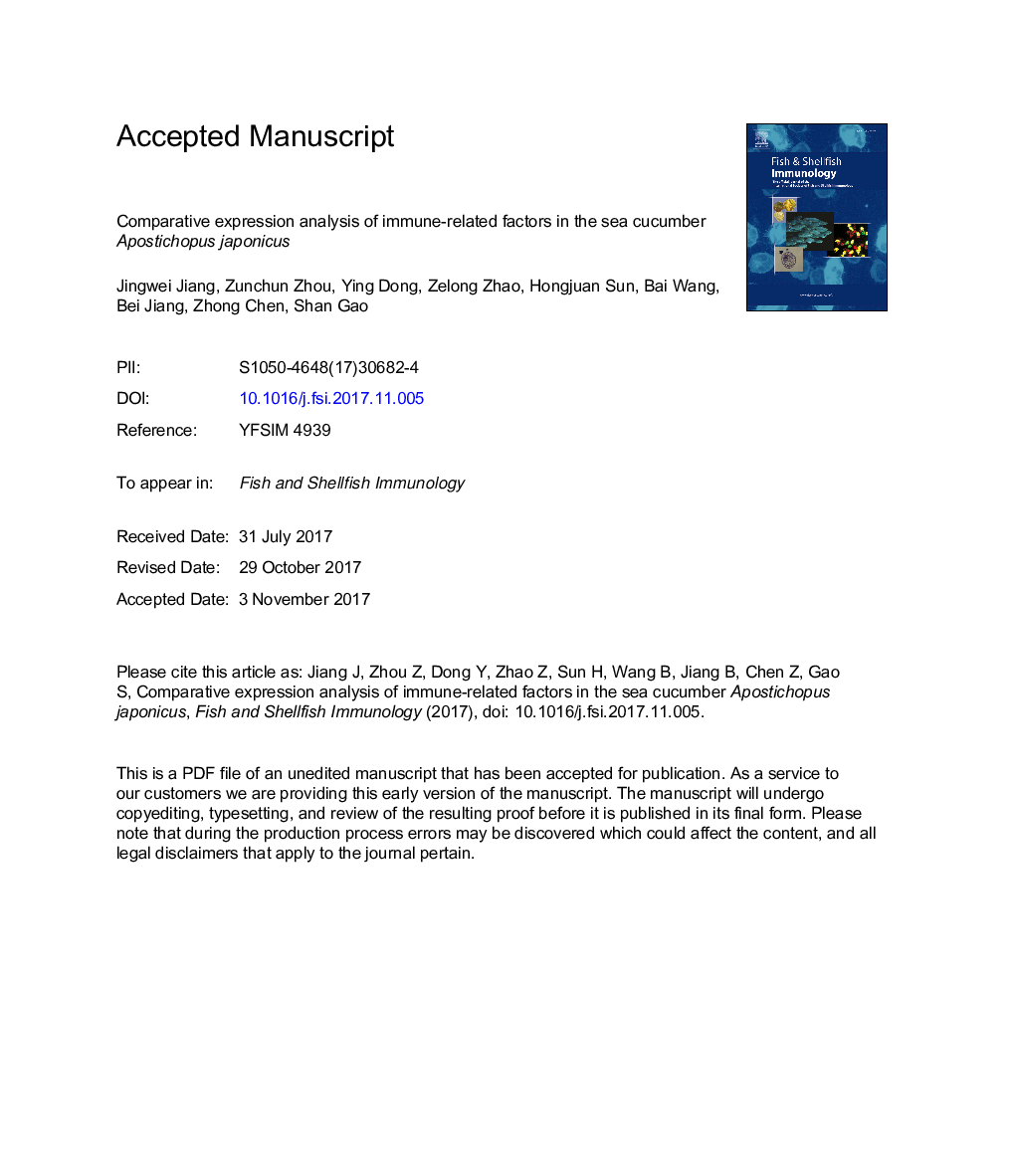| Article ID | Journal | Published Year | Pages | File Type |
|---|---|---|---|---|
| 8498872 | Fish & Shellfish Immunology | 2018 | 27 Pages |
Abstract
In order to preliminarily explore the joint involvement of different immune-related factors during the same immune process in Apostichopus japonicus, the transcriptional expression of Cu/Zn superoxide dismutase (Cu/Zn-SOD), catalase (CAT), c-type lysozyme (c-LYZ), i-type lysozyme (i-LYZ), cathepsin D, melanotransferrin (MTF), Toll, c-type lectin (c-LCT) and complement 3 (C3) during the development from fertilized eggs to juveniles and after challenging the juveniles with Vibrio splendidus, Pseudoalteromonas nigrifaciens, Shewanella baltica and Bacillus cereus, respectively, was measured using the method of quantitative real-time PCR (qRT-PCR), and then the correlations among different immune-related factors were analyzed. The results showed that the selected immune-related factors were expressed at all of the determined developmental stages and significantly up-regulated at doliolaria stage, suggesting the selected factors are indispensable immune components and the immune system might be broadly activated at doliolaria stage in A. japonicus. After challenged with four pathogenic bacteria, Cu/Zn-SOD, CAT, i-LYZ, cathepsin D, MTF, Toll, C3 were all significantly down-regulated at 4Â h, indicating that some components of A. japonicus immune system might be inhibited at the beginning of pathogenic bacteria invasion. The immune-responsive analysis also showed that the significant regulation in Toll after challenged with four tested bacteria, that in MTF after challenged with S. baltica and that in C3 after challenged with P. nigrifaciens were all minus, suggesting Toll, MTF and C3 are probably the primary targets of pathogenic bacteria attack. Furthermore, the correlation analysis indicated that, all of the selected immune-related factors except cathepsin D might be in the same immune regulatory network during A. japonicus development, while all of the selected immune-related factors except c-LYZ might be in the same responsive regulatory network after challenged with four pathogenic bacteria. Altogether, A. japonicus immune system exhibited high complexity in regulation during organism development and after bacterial challenges.
Keywords
Related Topics
Life Sciences
Agricultural and Biological Sciences
Aquatic Science
Authors
Jingwei Jiang, Zunchun Zhou, Ying Dong, Zelong Zhao, Hongjuan Sun, Bai Wang, Bei Jiang, Zhong Chen, Shan Gao,
